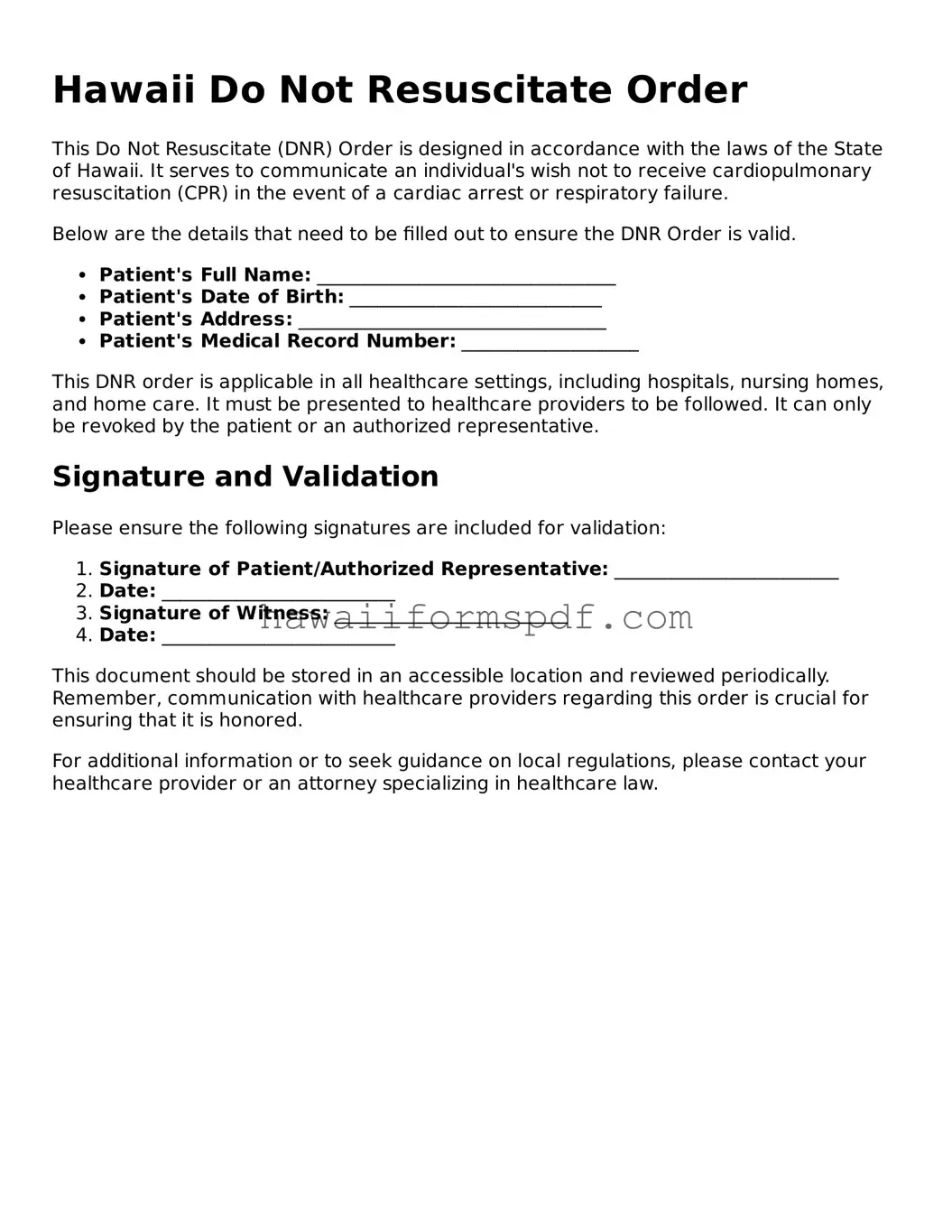What is a Do Not Resuscitate (DNR) Order in Hawaii?
A Do Not Resuscitate Order is a legal document that instructs medical personnel not to perform cardiopulmonary resuscitation (CPR) if a person's heart stops beating or they stop breathing. In Hawaii, this order is recognized by healthcare providers and is designed to respect the wishes of individuals regarding their end-of-life care.
Who can request a DNR Order in Hawaii?
In Hawaii, a DNR Order can be requested by a competent adult. This includes individuals who are at least 18 years old and can make informed decisions about their medical care. Additionally, a legal guardian or an authorized representative may request a DNR Order on behalf of someone who is unable to make decisions for themselves.
How is a DNR Order created in Hawaii?
To create a DNR Order in Hawaii, an individual must complete the state’s official DNR form. This form typically requires the signature of the individual, a witness, and a physician. The physician must confirm that the individual understands the implications of the order. Once completed, the DNR Order should be kept in a place that is easily accessible to emergency medical personnel.
Where should I keep my DNR Order?
It is important to keep the DNR Order in a visible location. Common suggestions include:
-
Placing it on the refrigerator door.
-
Keeping it in a medical file or binder.
-
Carrying a copy in a wallet or purse.
Additionally, inform family members and caregivers about the location of the document to ensure that it can be easily found in an emergency.
Can a DNR Order be revoked?
Yes, a DNR Order can be revoked at any time by the individual who created it. Revocation can be done verbally or in writing. It is advisable to inform healthcare providers and family members about the revocation to avoid confusion during medical emergencies.
What happens if I do not have a DNR Order?
If a person does not have a DNR Order in place, medical personnel are required to perform CPR and other life-saving measures if the individual’s heart stops or they stop breathing. This may not align with the individual's wishes regarding end-of-life care.
Are there any limitations to a DNR Order in Hawaii?
A DNR Order specifically applies to resuscitation efforts. It does not affect other types of medical care. Individuals with a DNR Order will still receive necessary treatments for other medical conditions, including pain management and comfort care.
Do I need a lawyer to create a DNR Order?
No, a lawyer is not required to create a DNR Order in Hawaii. However, it may be beneficial to consult with a healthcare provider or a legal professional if there are questions or concerns regarding the implications of the order.
How can I ensure my DNR Order is honored?
To ensure that a DNR Order is honored, individuals should take the following steps:
-
Complete the DNR Order form correctly.
-
Discuss the order with healthcare providers and family members.
-
Keep copies of the DNR Order accessible.
-
Regularly review and update the order as necessary.
The DNR Order form can be obtained from various sources, including:
-
Hawaii Department of Health website.
-
Healthcare providers and hospitals.
-
Local community health organizations.
It is important to ensure that the form used is the official state version to ensure it is legally recognized.
